Chrysurus Angelfish
$249.99
-
Select Variant
The Chrysurus Angelfish is also known as the Goldtail Angelfish or Ear Spot Angelfish. It is a rare aquarium member because only a few of them are ever collected. It is a mottled-brown fish with a long body and vertical white stripes. There are many bright sapphire-blue stripes
The head is dull yellow, while the tail is the same color.
sapphire-blue. The tail of a juvenile is light in color until they reach adulthood.
It can reach 3-4 inches. At that point, it starts to develop yellow.
coloration.
A 220 gallon or larger tank is required for the Chrysurus angelfish.
They require many hiding spots and large quantities of live rock for grazing. The Chrysurus Angelfish is prone to nip on stony soft corals (sessile invertebrates) and clam mantles They may be kept with small-polyped, stony corals. The unusual clicking sound that the Chrysurus angelfish makes is worth mentioning.
It is similar to other angelfishes in that it is hermaphroditic and has a hard time breeding.
It is difficult to distinguish males from females.
The diet of the Chrysurus angelfish should include Spirulina and marine algae, high-quality angelfish preparations (mysis or frozen shrimp), and other meaty items.
Estimated Purchase Size: Juvenile: Small 1-3/4" to
2-1/4"; Medium 2-1/4" to 2-3/4"; Large 2-3/4" to 3-1/2"; SubAdult: Small
2" to 2-1/2"; Medium 2-1/2" to 3 1/4"; Large 3- 1/4" to 4 1/2"; Adult:
Small 2-1/4" to 2-3/4"; Small/Medium 2-3/4" to 3-1/4"; Medium 3-1/4" to
4"; Medium/Large 4" to 5"; Large 5" to 6"; X Large 6" to 7"; XX Large 7"
to 8"; Show Size: 8" to 10"
- Description
- Additional Information
- Reviews
Chrysurus Angelfish
The Chrysurus Angelfish, also known as the Goldtail Angelfish or Ear Spot Angelfish, is a striking species native to South Africa, the western Indian Ocean, and Madagascar. It can grow up to 13 inches in length. This fish features a black/brown body with vertical white bands, bright blue bands on its head, belly, and anal fins, and a yellow tail. Juveniles have a clear tail that turns yellow as they mature.Housing Needs for the Chrysurus Angelfish
- Tank Size: Requires a minimum of 220 gallons with ample live rock.
- Reef Compatibility: Not ideal for reef tanks as it may nip at stony and soft corals, and clam mantles. However, it can be kept with small-polyped stony corals and some noxious soft corals.
- Hiding Places: Provide multiple hiding spots to reduce stress.
Diet and Nutrition
- Dietary Requirements: Feed a varied diet including Spirulina, marine algae, high-quality angelfish preparations, mysis shrimp, and other meaty foods.
- Feeding Frequency: Regularly provide a mix of these foods to maintain optimal health.
- Behavioral Note: The Chrysurus Angelfish makes an unusual clicking sound when stressed.
Origin and Characteristics
- Native Region: Found in South Africa, the western Indian Ocean, and Madagascar.
- Appearance: Mottled-brown body with vertical white stripes, bright sapphire-blue stripes on the head, and a yellow tail rimmed with sapphire-blue.
- Breeding: Hermaphroditic with no distinct male or female traits; breeding in captivity is challenging.
Approximate Purchase Size
- SubAdult Small: 2"
LINKS to follow:
size
Large, Medium, Small
Units
1
Weight
6 lbs
Dimensions
1 × 1 × 1 in

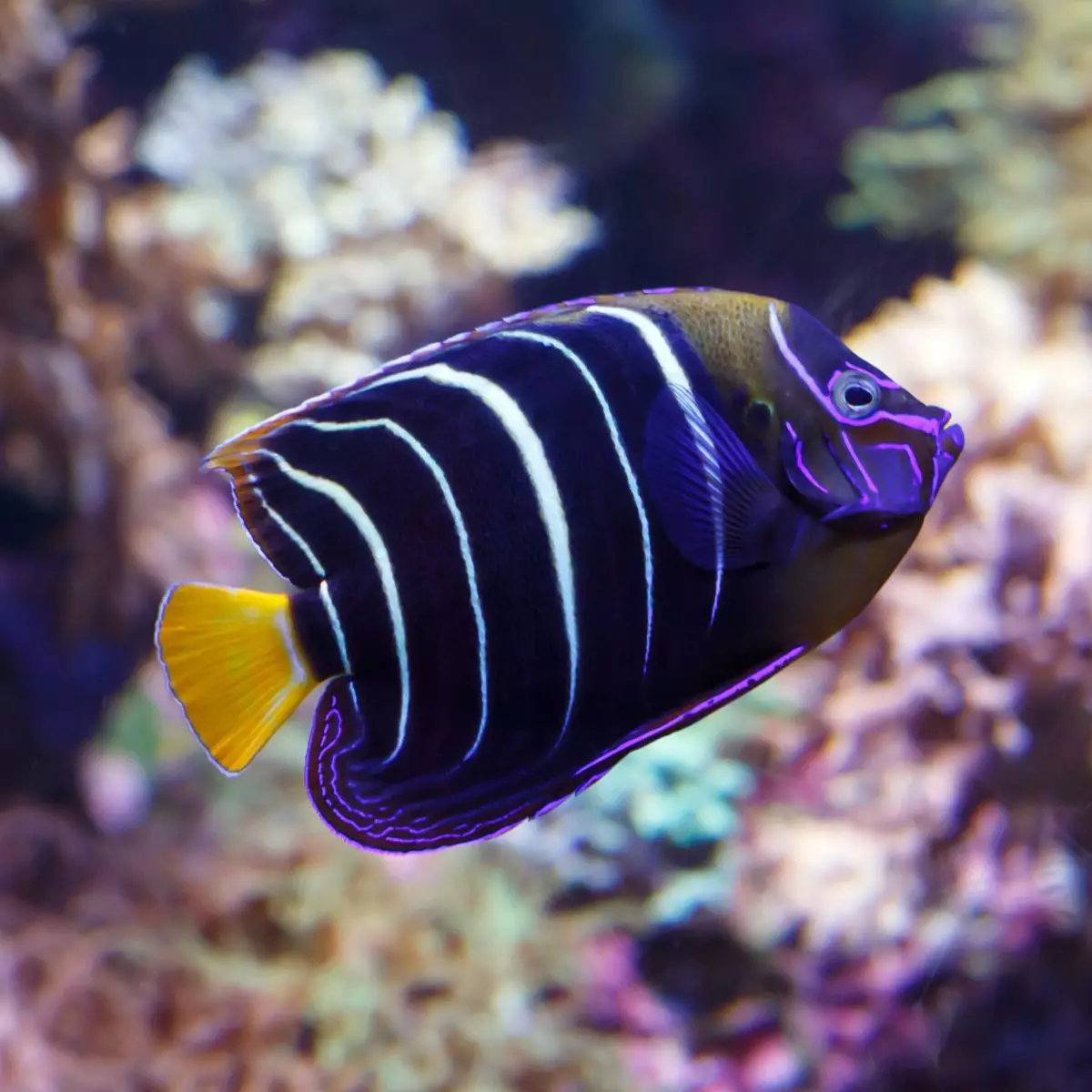
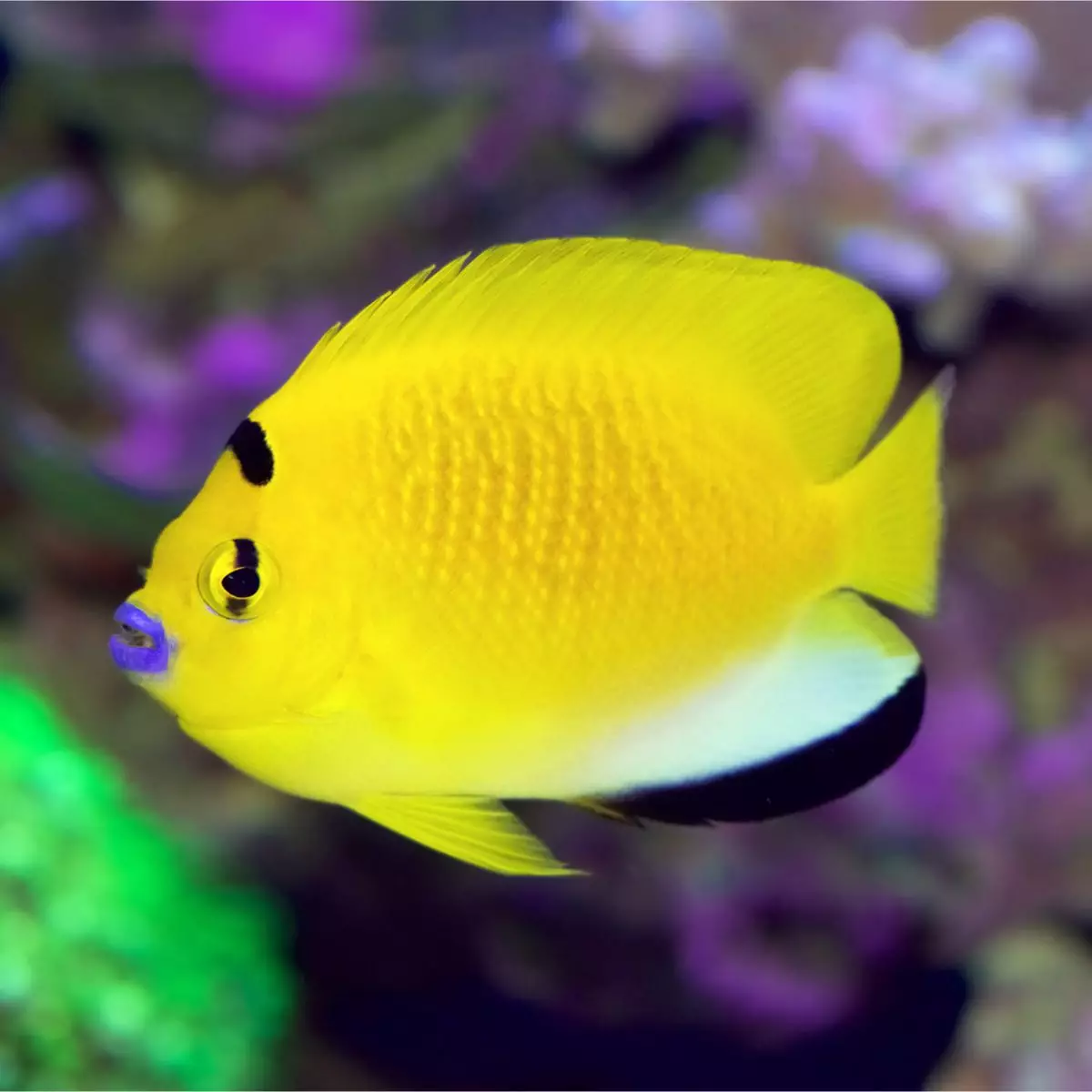
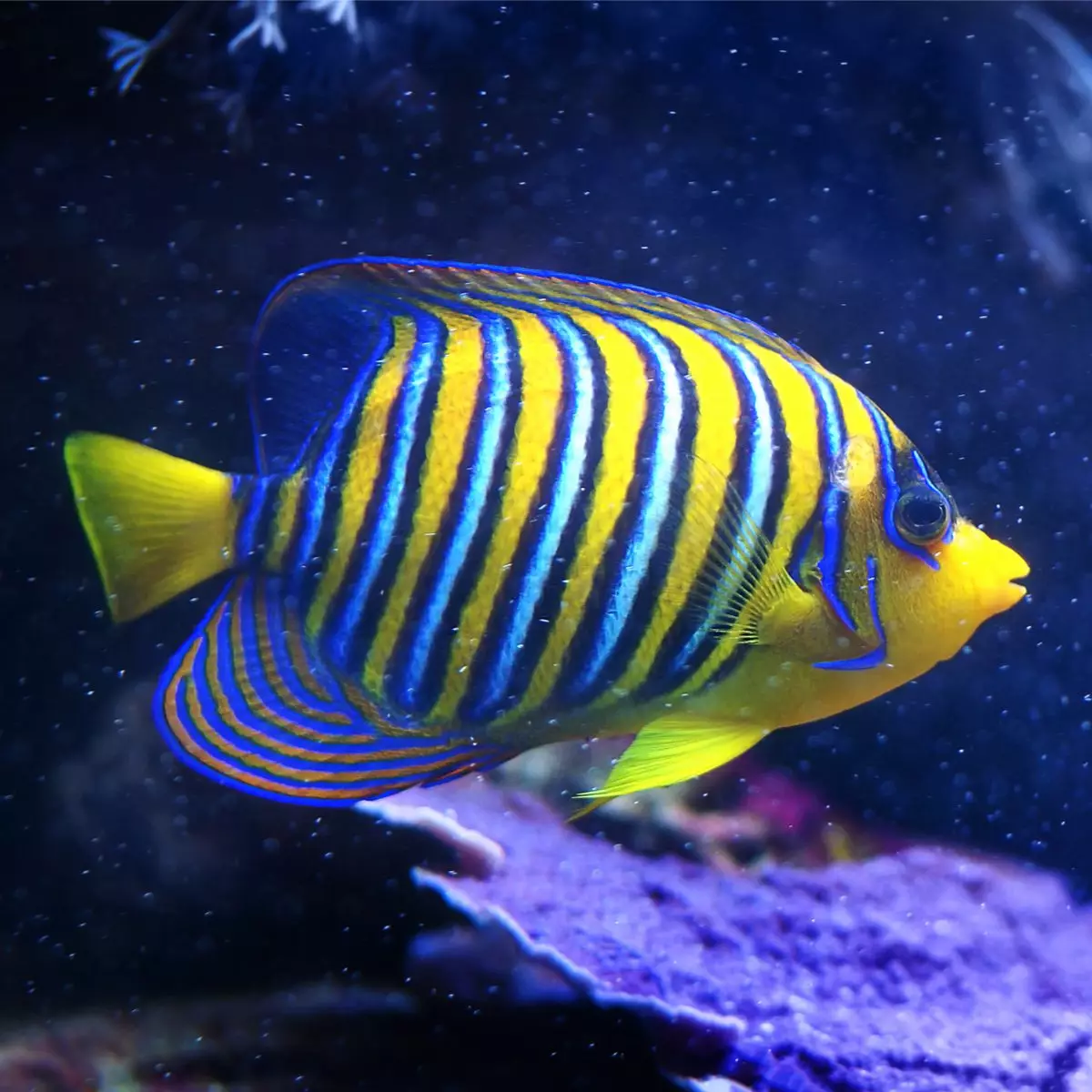
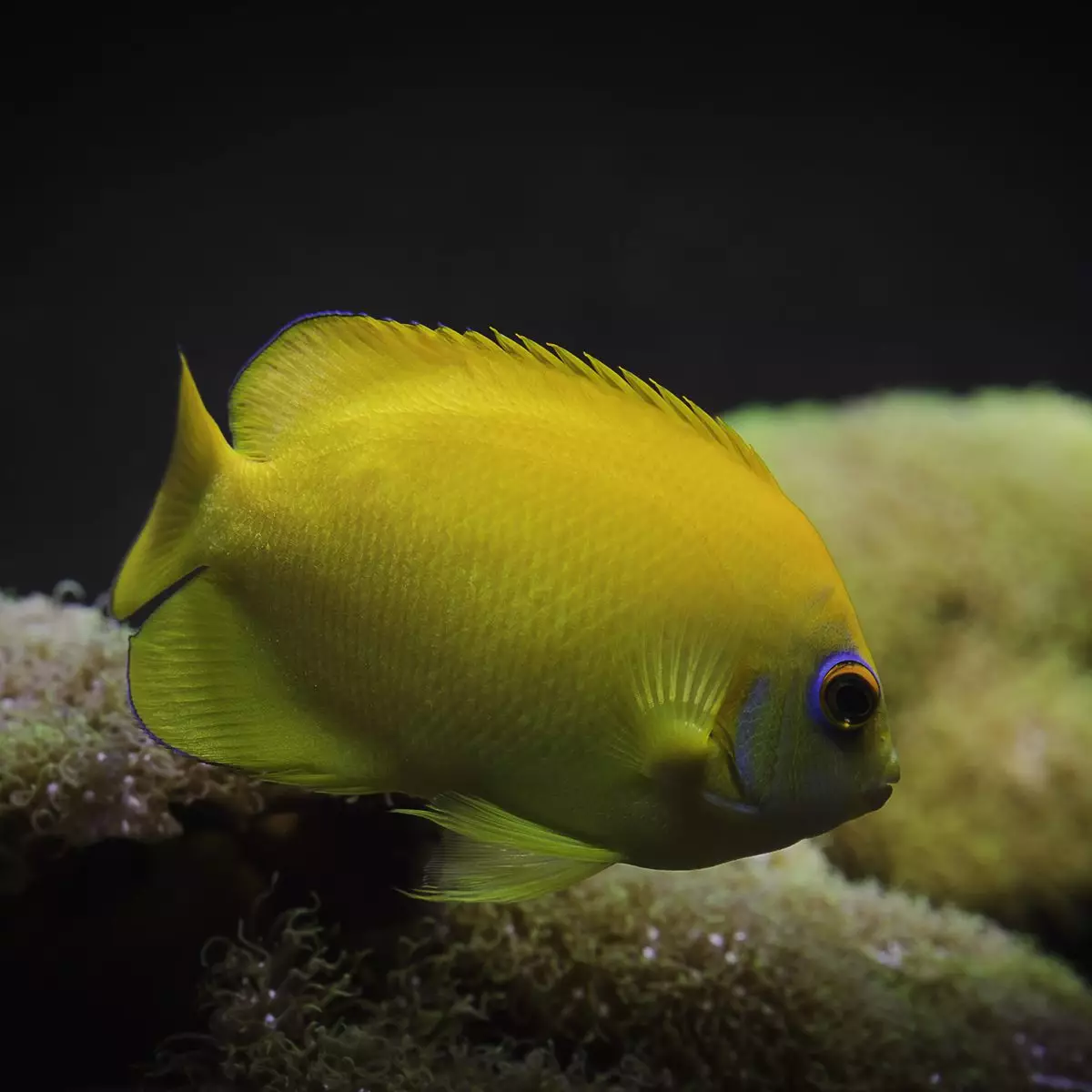
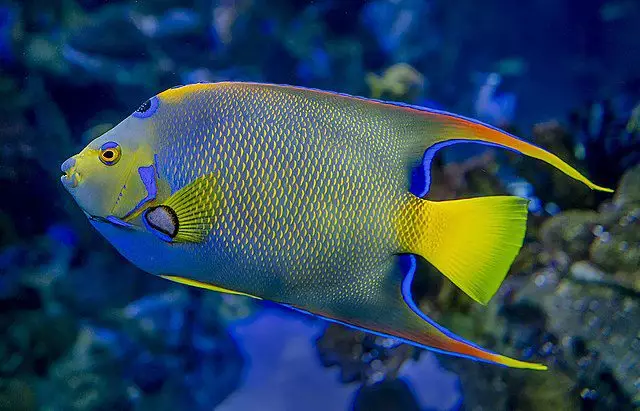

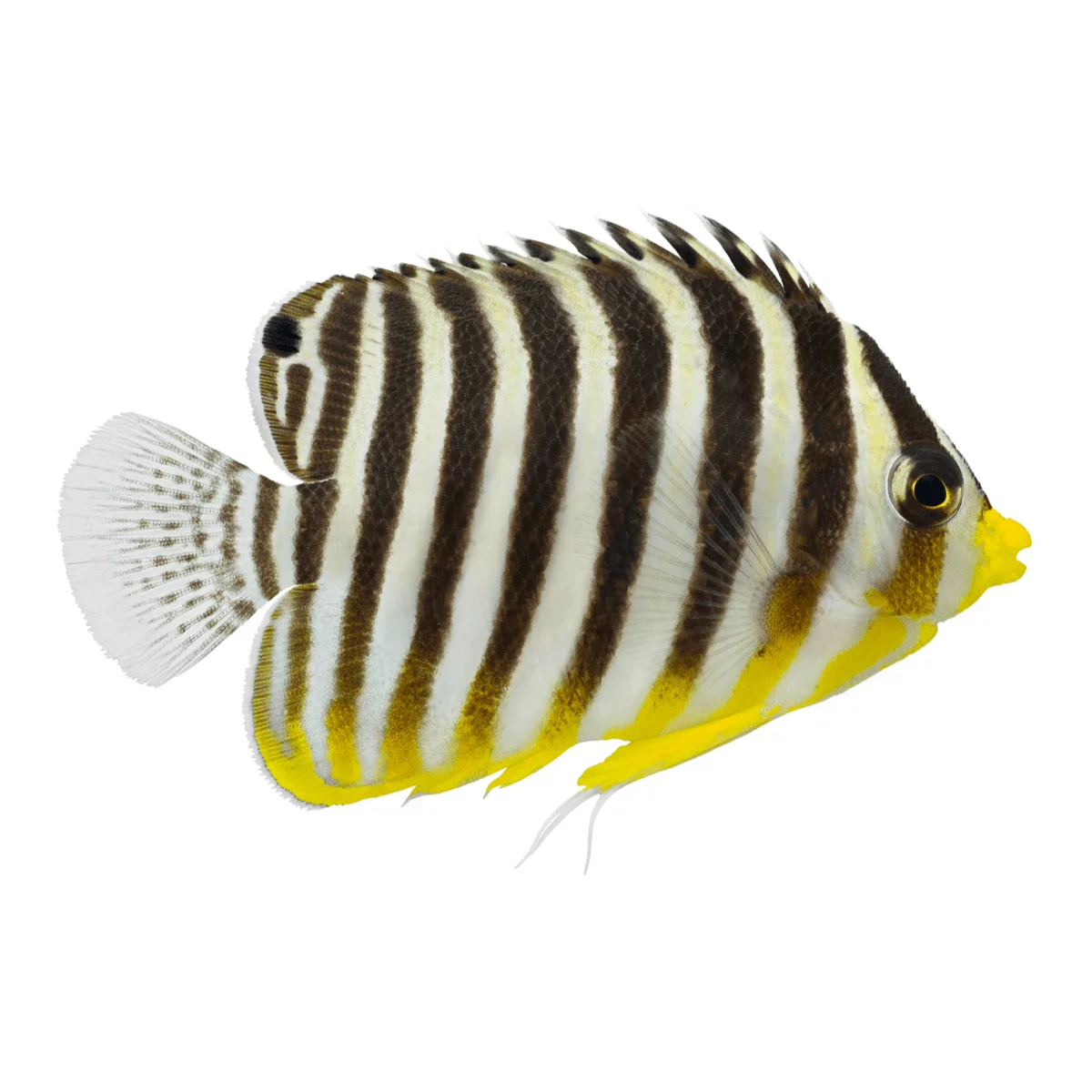
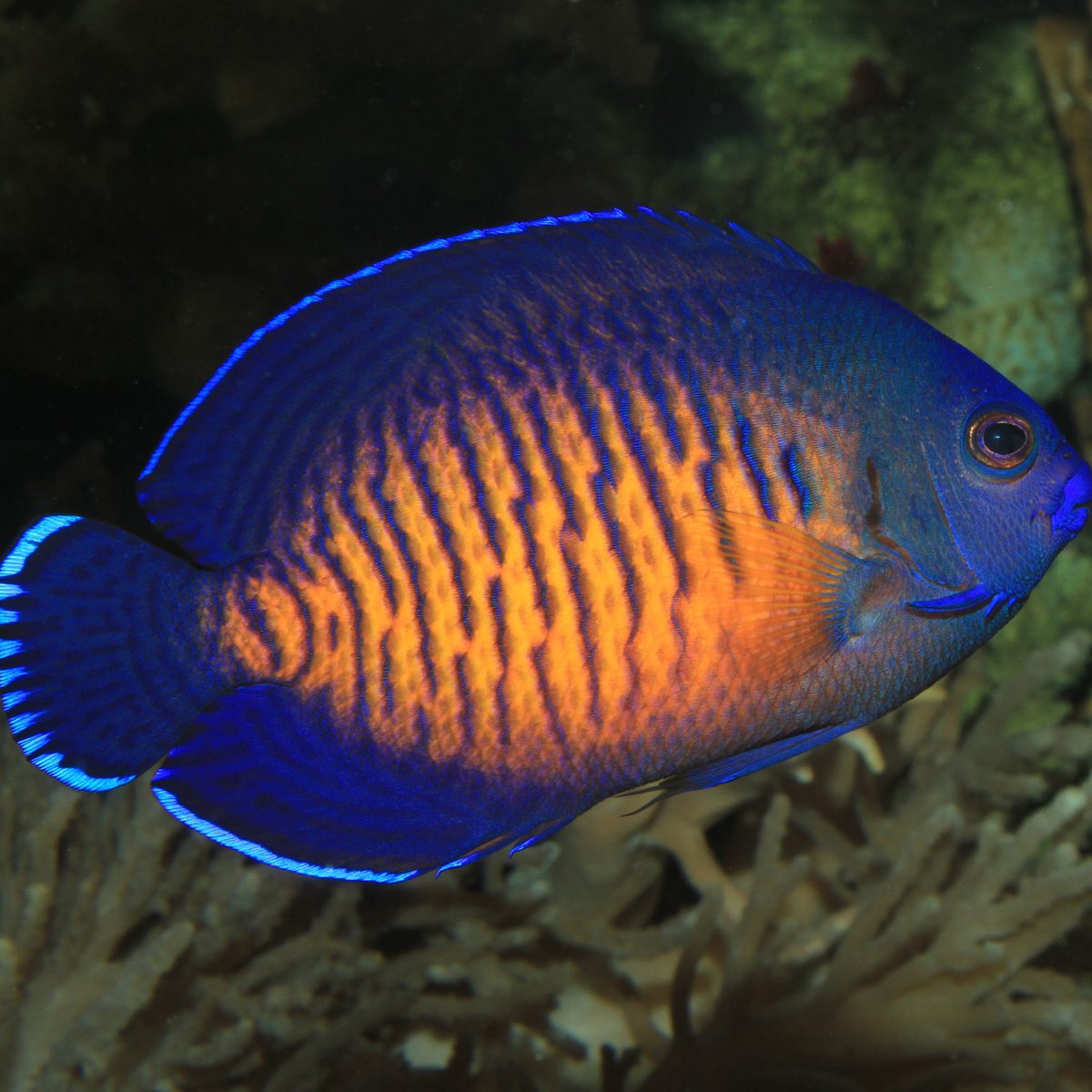
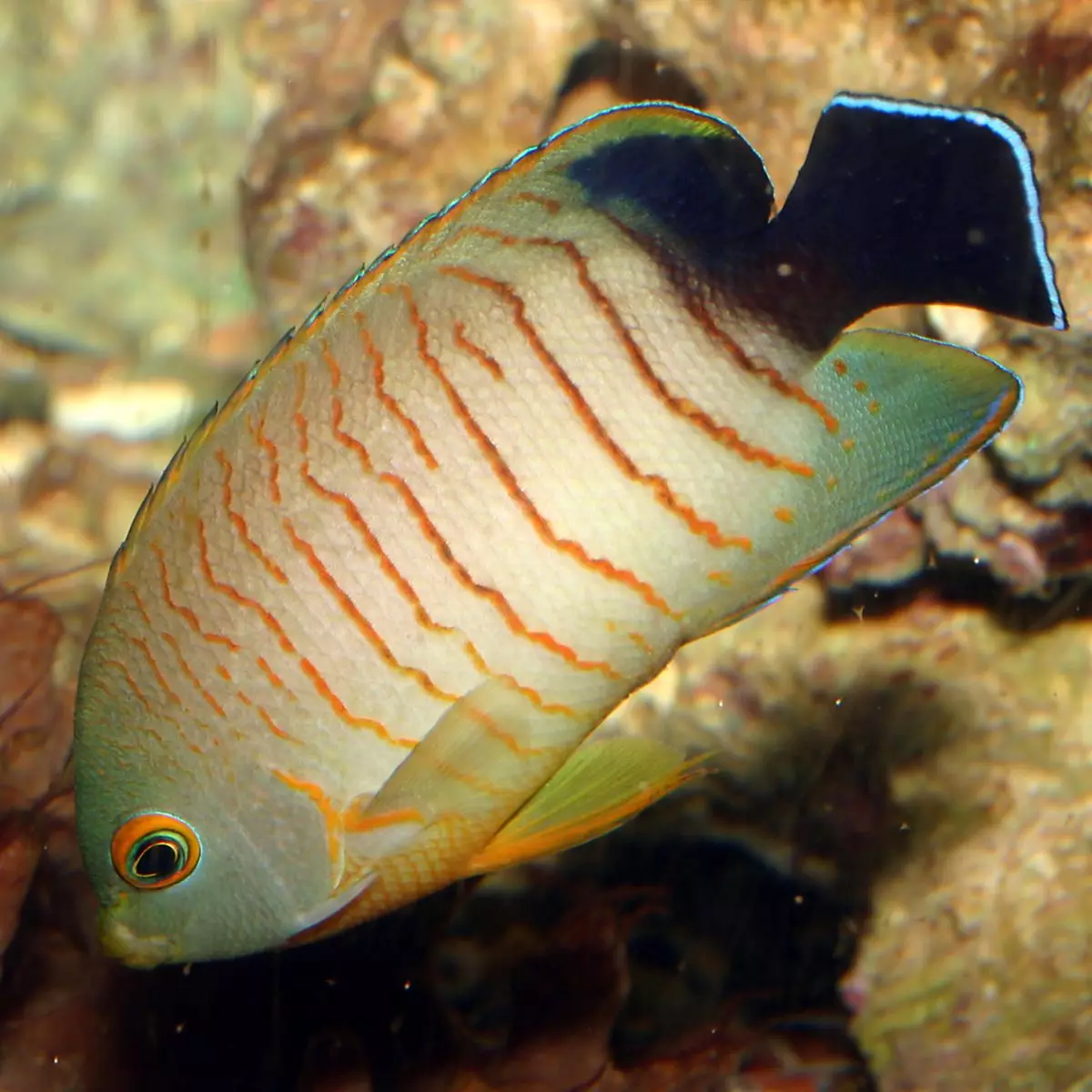

Reviews
There are no reviews yet.